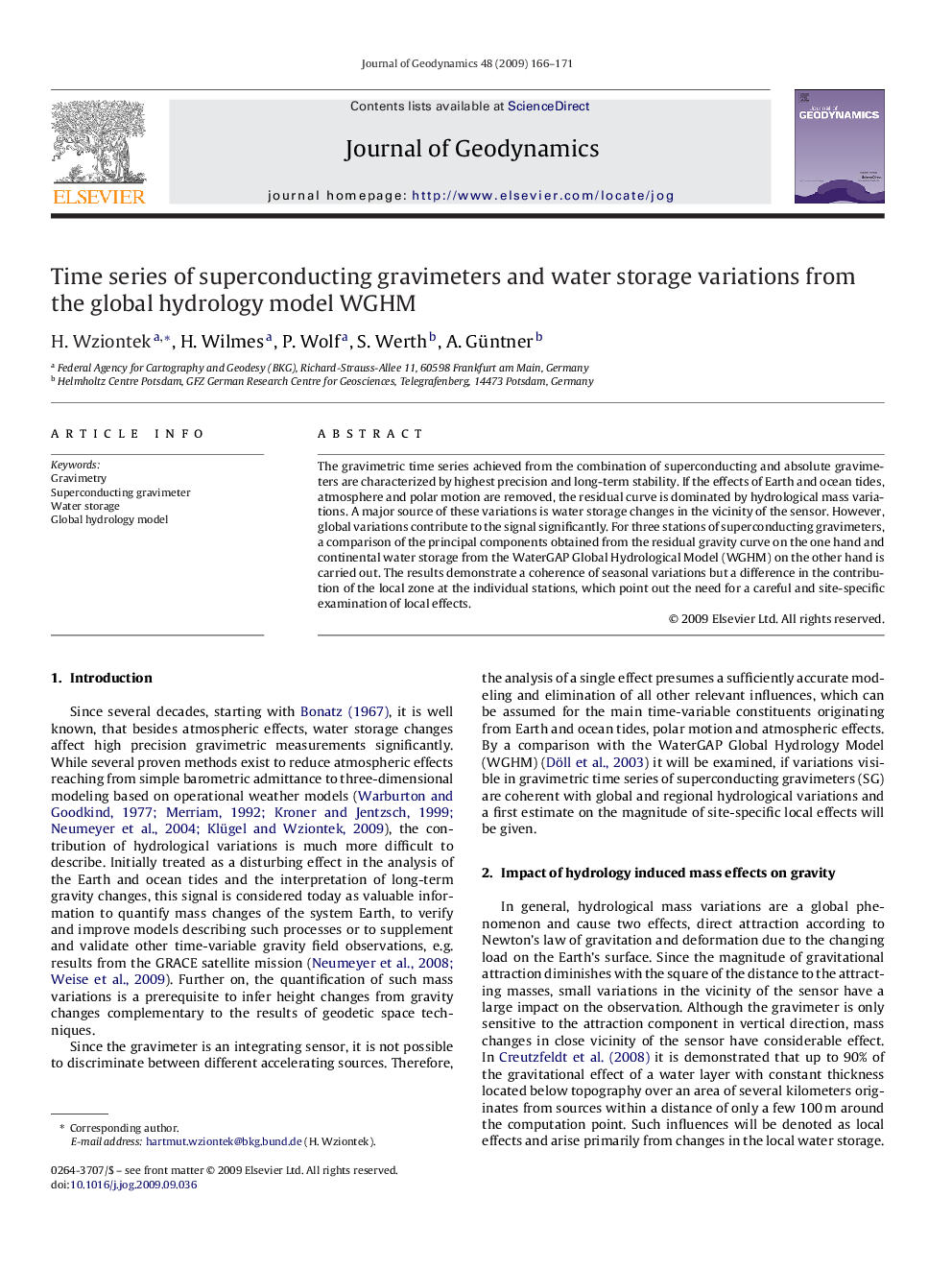| Article ID | Journal | Published Year | Pages | File Type |
|---|---|---|---|---|
| 4688622 | Journal of Geodynamics | 2009 | 6 Pages |
Abstract
The gravimetric time series achieved from the combination of superconducting and absolute gravimeters are characterized by highest precision and long-term stability. If the effects of Earth and ocean tides, atmosphere and polar motion are removed, the residual curve is dominated by hydrological mass variations. A major source of these variations is water storage changes in the vicinity of the sensor. However, global variations contribute to the signal significantly. For three stations of superconducting gravimeters, a comparison of the principal components obtained from the residual gravity curve on the one hand and continental water storage from the WaterGAP Global Hydrological Model (WGHM) on the other hand is carried out. The results demonstrate a coherence of seasonal variations but a difference in the contribution of the local zone at the individual stations, which point out the need for a careful and site-specific examination of local effects.
Related Topics
Physical Sciences and Engineering
Earth and Planetary Sciences
Earth-Surface Processes
Authors
H. Wziontek, H. Wilmes, P. Wolf, S. Werth, A. Güntner,
